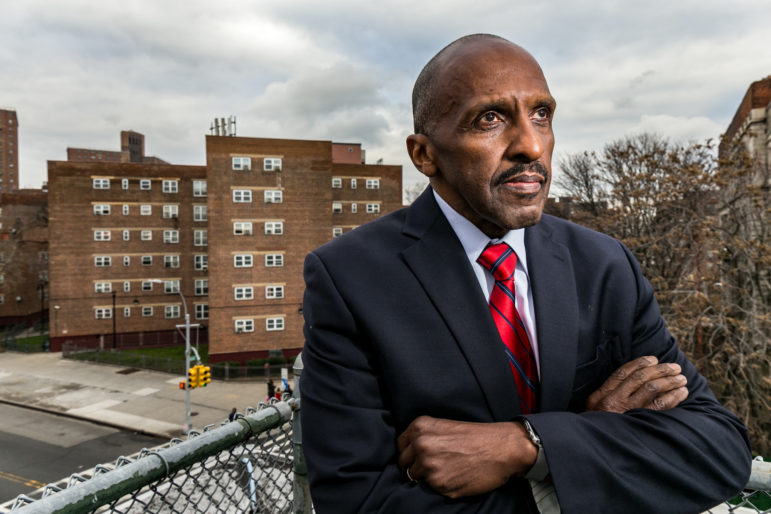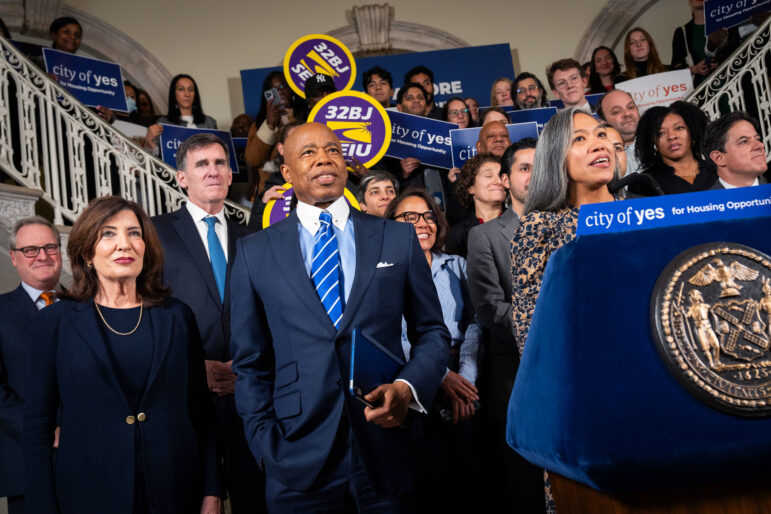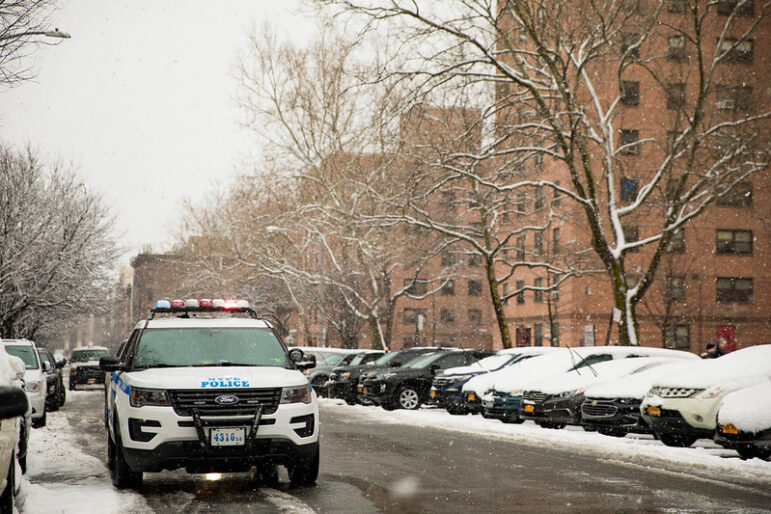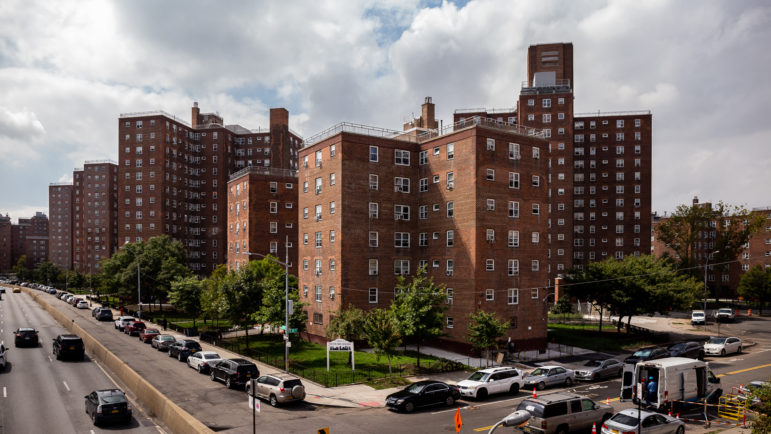
Adi Talwar
This is the third part in Death’s Disparities, a series about the growing gap in life expectancy between rich and poor New York.
* * *
Five years ago, a group of survey takers set out on a deceptively simple task—to ask people what brought them to the emergency room. For two weeks in the summer of 2011 and again in the winter, the surveyors, including medical students, hospital staff and hospital volunteers, visited six hospital emergency rooms in northern and central Brooklyn and asked the simplest of questions: Why are you here?
Of all the answers that surprised the survey gatherers for the Brooklyn Health Improvement Project, the most surprising one was also the simplest: It was easier and more convenient to sit in an ER waiting room than to try and find a doctor who would see them and help them the same day. It was easier to sit and wait in one place than to be bounced around by phone, put on hold or put off entirely. The added benefit of the ER waiting room: It was near the hospital specialists, labs, pharmacies and outpatient clinics. Rather than travel all over to see an internist, get blood work done, get into the radiologist for a CAT scan, any follow-up you needed could be done the same day or soon after, in the same place. Like getting food for the week, back-to-school clothes and a new bike at Target—getting all your health care needs met at the hospital just made sense.
Until, that is, the city started closing them. Since 2003, 16 hospitals have closed around New York City, four in Brooklyn alone, putting more and more pressure on the remaining hospitals to see more patients under more crowded and facility-challenged conditions. For families living in poor neighborhoods, more hospital closings have put greater pressure on the surviving facilities, and they have also stretched the distances people have to travel to receive care.
A system shifts
Roger Green, executive director of the DuBois-Bunche Center for Public Policy at Medgar Evers College, believes that the direct economic impact of changes in the medical industry has fed into the neighborhood’s economic problems, thus exacerbating the health crises.
The privatization and consolidation of the medical sector in Brooklyn has caused hospitals and clinics to close, and in their wake, affected the fortunes of the locally owned businesses that provided goods and services to the health care system, say health care advocates. As part of an ongoing effort to study the financial effects of hospital closures and consolidations, Green and a group of health care advocates recently met with Councilman Robert Cornegy from Brooklyn, chair of the Committee on Small Business, to request funding to track and assess the changes in the health care labor market over the past 10 years, “to look at the supply chain and see where those dollars are going,” says Green.
For Judy Wessler, a long-time health care advocate, the hospital closings and consolidations were compounded by the state cuts to Medicaid reimbursement in 2012, exacerbating the financial fragility of the safety-net hospitals and putting care, and jobs, in jeopardy, something, she says, the state has not taken fully into account.
“It didn’t hurt the big guys,” says Wessler of the 2 percent across-the-board Medicaid reimbursement cut in 2012; “It hurt the health care facilities that primarily take care of low-income people and people on Medicaid”—health care facilities such as Interfaith, at the nexus of Bedford-Stuyvesant, Crown Heights and Brownsville; Brookdale in East New York; Kingsbrook Jewish in East Flatbush and Wyckoff in Bushwick.
More Than Open Space
Could parks help narrow health disparities?
* * *
As a way to remediate the problem, the state has been doling out dollars to those hospitals, but it’s been ineffective, Wessler insists. Instead of fully funding Medicaid reimbursement, the state is providing dollars “to keep the institutions open, but limping along,” says Wessler.
On the last day of December 2016, Gov. Andrew Cuomo vetoed a bill that would have increased the reimbursements to hospitals that provide a disproportionate share of care to Medicaid patients as well as uninsured patients. The bill, despite being supported by both legislative houses in Albany, would result in “increased and unbudgeted costs to the Medicaid program,” the governor wrote explaining the veto. The governor said any changes to the reimbursement system should be done through the state’s budgetary process.
For Brownsville residents and patients in financially strapped neighborhoods, the biggest problem with the hospital closures has been the lack of access both to an emergency room and to primary and specialist care. Because Medicaid does not fully reimburse for specialty care, those doctors who are specialists tend to congregate in Downtown Brooklyn and wealthier neighborhoods, and are reluctant to take on Medicaid patients. As more and more patients have lost access to specialists, their underlying health problems have gone from serious to life threatening, putting greater strains on the remaining hospitals to care for them.
Last year, in an acknowledgment that many of the residents of Brooklyn were facing an unprecedented crisis in lack of access to care, the New York State Legislature appropriated $700 million as part of the ‘Kings County Health Care Facility Transformation Program.’ The funds were specifically designated to support projects that will “create a more financially sustainable system of care.” In April, Gov. Cuomo commissioned a feasibility study on the proposed revamping of Brooklyn’s health care delivery system from Northwell Health (formerly North Shore-LIJ Health System).
In a report released this past September, Northwell, now in partnership with Maimonides Medical Center, proposed a massive redesign of all the borough’s safety-net hospital campuses, the recruitment of 120 health care providers and a network of 36 new facilities, to include urgent care, primary care and specialty services “that can provide over 500,000 visits annually.”
Under the Northwell report’s recommendations, Brookdale, Interfaith and Wyckoff will handle inpatient care. Kingsbrook, while retaining an emergency room but no inpatient beds, will be transformed into a regional campus for post-acute, specialized ambulatory care, as well as serve as the location of programs “addressing the social determinants of health.” The report, which builds on extensive surveys and reports done by Brooklyn hospital executives and health care advocates over the years, has been received with cautious optimism, though the question of how quickly the transformation can be achieved is the biggest outstanding issue – Northwell notes that it will take “at least five to seven years” to accomplish the transformation.
Obamacare’s complexity
The Brooklyn Health Improvement Project’s final report noted that north central Brooklyn, with 2 million residents across 15 zip codes, was facing a crisis of epidemic proportions—lack of health care facilities, lack of providers, an elderly population that had increased by 19 percent in 10 years, with nearly one third of residents on Medicaid or Medicare.
Four years on, the health care statistics for those neighborhoods have worsened, and only now, says Anthony Feliciano, of the Commission on the Public’s Health System, has the blame-the-victim mentality started to shift with the implementation of the Affordable Care Act. “People are starting to understand that there are factors outside the control of marginalized communities. If someone doesn’t have a roof over their heads, it will most likely exacerbate the health care issues that they have. That’s what you see in Brownsville—the question of where people live, where people work, will dictate the doctor they get to or go get their care, and how many times they will use their care,” says Feliciano.
While the Affordable Care Act’s greatest influence has been in the increase in the number of people enrolled in health care programs—an estimated 20 million people now have health insurance, a little less than half that number newly insured under the ACA – the Act has also expanded Medicaid access to low-income and poor families in states that opted to adopt that change, encouraging people who once went without health care to access the medical system to start getting treatment for chronic care.
More to the point, perhaps, for many health care advocates, the Act has highlighted how long people have gone without care, and how entrenched health care problems have become because of that lack of access to care. The fear now, for safety-net hospitals, federally qualified health care centers, community-based clinics, and even for financially healthy hospitals, is what will happen with the inauguration of Donald Trump. The 45th president-elect has spoken often about repealing the ACA and his nominee for Secretary of Health and Human Services, Tom Price, has also been an outspoken opponent of the ACA.
In the last week of December the New York Times reported that 5,000 doctors signed a letter protesting the AMA’s endorsement of Price as Trump’s nominee for Health and Human Services, which controls Medicare, Medicaid, the Affordable Care Act’s federal health insurance exchanges as well as the National Institutes of Health, the Food and Drug Administration and the Centers for Disease Control. In a letter to Trump and congressional leaders in December, the two biggest hospital trade groups warned of “an unprecedented public health crisis” if the ACA is repealed, the Times also reported.
Little is known about Trump’s plans that some healthcare experts see reason to hope. “I think it’s too early to tell,” Dr. Amanda Parsons, vice president of community and population health at Montefiore Health System, says. “I think the incoming administration has made a lot of signaling about their interest in giving states back more control over programming, including health care, and so if they were successful in doing that and if there was more control of New York State to decide what it would and would not pay for, that could potentially open up more possibilities for New York State Medicaid, because our state is pretty progressive in the way that it thinks about these issues.” She adds: “So if they make restrictions at the federal level, those could be difficult for us, but if they end up pushing the autonomy back to the states, that could work out very well for us. It may not work out so well for residents for other states, but I think that could work out okay for people in New York State. But we still have to see. I think it’s really, really early to start calling any shots on this administration.”
To those critics who say that the ACA, adopted in 2010 but not implemented until 2014, has failed to solve the problem of health care disparities, Harvey Lawrence, executive director of the Brownsville Multi-Service Family Health Center, says the Act has not been given enough time for its effect to be felt. “These are issues baked into the system for generations—everyone is treating it as ‘Well, if the ACA hasn’t solved it, it’s a failure.’ Are you kidding me?” says Lawrence. “Poor people and people in poor neighborhoods have been dying for decades of diabetes and hypertension, you name it. The difference may be that it’s more visible. People are looking at the data and paying more attention to it.”
With reporting by Janaki Chadha
Read Part 4: Residents’ Resiliency Offers Hope for Better Health in Brownsville









17 thoughts on “Hospital Closures and Medicaid Shifts Took Toll on NYC’s Health”
Pingback: What Drives NYC’s Health Disparities? – Hostos First Year Seminar
The paragraph that stood out the most to me was the one that said this:
“In the last week of December the New York Times reported that 5,000 doctors signed a letter protesting the AMA’s endorsement of Price as Trump’s nominee for Health and Human Services, which controls Medicare, Medicaid, the Affordable Care Act’s federal health insurance exchanges as well as the National Institutes of Health, the Food and Drug Administration and the Centers for Disease Control. In a letter to Trump and congressional leaders in December, the two biggest hospital trade groups warned of “an unprecedented public health crisis” if the ACA is repealed, the Times also reported.”
So, just what, exactly, is going on? Are the powers that be playing with people’s lives over political spats? Shame shame shame!!!
Yes we need to be extremely concerned about a petition signed by
.004% of US physicians
There are not 100 million doctors in america.
Your math is wrong too! 🤣
You mean 0.4%
It’s criminal the way the media the management of major liberal run cities, with the willing support of the msm, have tried to shift the blame for their healthcare and homeless failures to President Trump, even though these situations and failures have been fomenting for years.
As a retired CPA, I have watched the evolution of our health care system since the Medicare began in 1966. Today, Medicare, Medicaid, and Affordable Care Act are all under Federal Government Health and Human Services. Here is a simple example: Doctor visit with lab work ~ $220 charge, Medicare allowable cost $58, Medicare pays 80% $46.80 and the patient is responsible for the balance. If they have a supplemental, Medicare has dictated the maximum allowed to be paid $58. The patient nor the supplement are allowed to pay more. This is why hospitals, Doctor’s office. and emergency care facilities are going out of business. Our Government health cares are bankrupting them!!
Medicaid pays less than Medicare. Thus expanding it only makes things worse
The balance on this bill would be $11.20, which I totally understand could be hard to pay for someone with no or low income to pay. But that is NOT the reason hospitals, physician’s offices or ER facilities are going out of business. The reason is there is no price transparency in our health care system. Yes, the government does determine how much a procedure Medicare will pay for. Which is why you see so many physicians refusing to accept Medicare patients. The hospital and physician conglomerates make the pricing up in accordance how the patient is paying. They make contracts with the insurance carriers on what they will charge so they get “full” reimbursement. So if I have a great insurance plan, that has a better contract than a smaller carrier’s plan because they don’t have a big corporation of hospitals and physicians backing them up, they are going to charge me twice as much and the insurance carrier is going to pay them a higher amount. THAT is what is bankrupting and forcing the smaller facilities out of business. An emergency appendectomy should have a cost range relative to the situation, not a wide array of charges depending on where the hospital is located, who owns it, etc. These large corporations have the power to line their pockets as a whole while your local surgeon that goes to the small 30 bed hospital in their area has no choice but to accept what the government (Medicare) says that same procedure is worth. The ACA law says that an insurance carrier can only make a 20% profit for admin, salaries, marketing, etc. If they do not spend 80% of the premium on actual health care for the insured, they must refund them the overage. Maybe hospitals and physicians should be regulated in the same way, then you have a fair system and everyone gets fair and equal service, regardless of their income or if they have insurance. I should be able to search for a procedure on the internet and price compare just like I do a 70″ television. AMA would not go for that, they aren’t going bankrupt, they are spending millions of dollars to make sure that there is NO price transparency. So while I personally think the ACA is the worst and most unfair law ever passed, it isn’t actually bankrupting the money grubbing hospital and physicians, their greed is doing that.
you are right on reimursements, and contractual agreements
Thank you for sharing your observations. I have spent 40 years working at three major hospitals with outpatient clinical sites. My view is the government payment system has Walmarted health care. Only health care
systems thst get larger and push overhead lower survive.
If a doctor visit maybe so, if just lab work, Medicare pays for covered lab services, thus it would just be a physician cost share, under Original Medicare, or a copay, under a Medicare advantage plan, and the lab was covered 100%. Medicare was set up for people on retirement income. You’d be surprised how many people live off of < $1500/mo, still, as they had no pensions, nor retiree medical plans. Medicare has served the purpose, so far, unless someone comes up with a better plan, i.e., socialized medicine, or something else. We haven't seen the proposals from Trump for a better plan, yet. We will always have to tweak a system in order to get it to work better each year. There has been a disparity among access to care for years. It is really sad how it evolved to the providers/hospitals not being able to operate financially. That made the access to care even worse. Who has the answers?
Get the government out of the health care insurance business then start going after the industry for price gouging and I’ll bet you dimes to dollars that prices will fall like a rock.
Two thumbs up!
Go after the LAWYERS who file fake malpractice claims and limit damages unless there is CLEAR negligence and you will solve the problem.
PRICE GOUGING is NOT what you think it is!
#1 and #2 are lawyers and government bureaucracy. It may not be in that order but THAT is what drives the cost of healthcare.
To hear so many complain about prescription drug prices you might be surprised to know. While there may be $.010 in chemical costs to produce a drug, JUST to get through government compliance, research, trials, etc., can cost OVER $1 BILLION. Part of that is because they may have $10’s, or even $100’s of millions in R&D on some drugs that never make it to market. Part of it is the legal issues. If 1 person dies, even if 1 MILLION are saved, they have to accept there are will be MANY millions in settlements or lawsuits paid. EVEN in some cases if the risks were clearly explained and even if the person ABUSES the drug.
There are a lot more factors than “greedy” medical practice, although that IS a factor too. To understand, just look at their profit margins. Although some do VERY well in certain years (new drug released that “takes off”), overall the net profit margin averages 12.5% to 14%. That IS respectable but is certainly NOT obscene. You can NOT rely on gross margins because there are many extra costs buried in there that do not come out until you get to a NET margin. For example, tax deductions for previous failed R&D expenses on drugs that never make it to market.
You will almost always find people quoted either the BIG dollars or the gross margin but never getting to the net margin. And that NET margin is LESS than the government tax on gas at the pump, and is LESS than the 15%+ they take out of your paycheck in FICA, SS, Medicare, AND the hidden employer MATCHED contribution.
None of those things support the LIBERAL ATTACK agenda to take over health care though so you never hear about them.
=========
The reasons above (mostly lawyers and regulatory) are why there is such a HUGE cost difference for drugs in the US verses developing and 3rd world countries. They are not NEARLY as strict as we are. For the most part, if the US approves a drug it is often rubber stamped in many other countries. And their legal system is not nearly as accommodating in supporting frivolous victim claims. So, the cost of doing business in those countries is RADICALLY lower.
On the last day of December 2016, Gov. Andrew Cuomo vetoed a bill that would have increased the reimbursements to hospitals that provide a disproportionate share of care to Medicaid patients as well as uninsured patients. The bill, despite being supported by both legislative houses in Albany, would result in “increased and unbudgeted costs to the Medicaid program,” the governor wrote explaining the veto. The governor said any changes to the reimbursement system should be done through the state’s budgetary process.